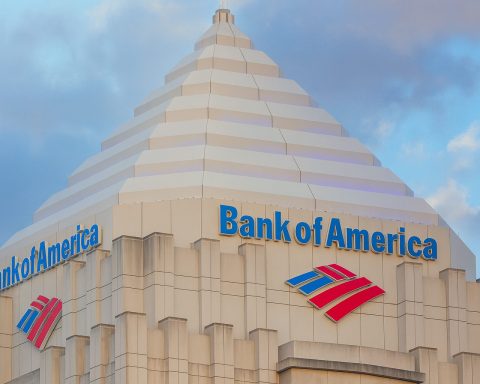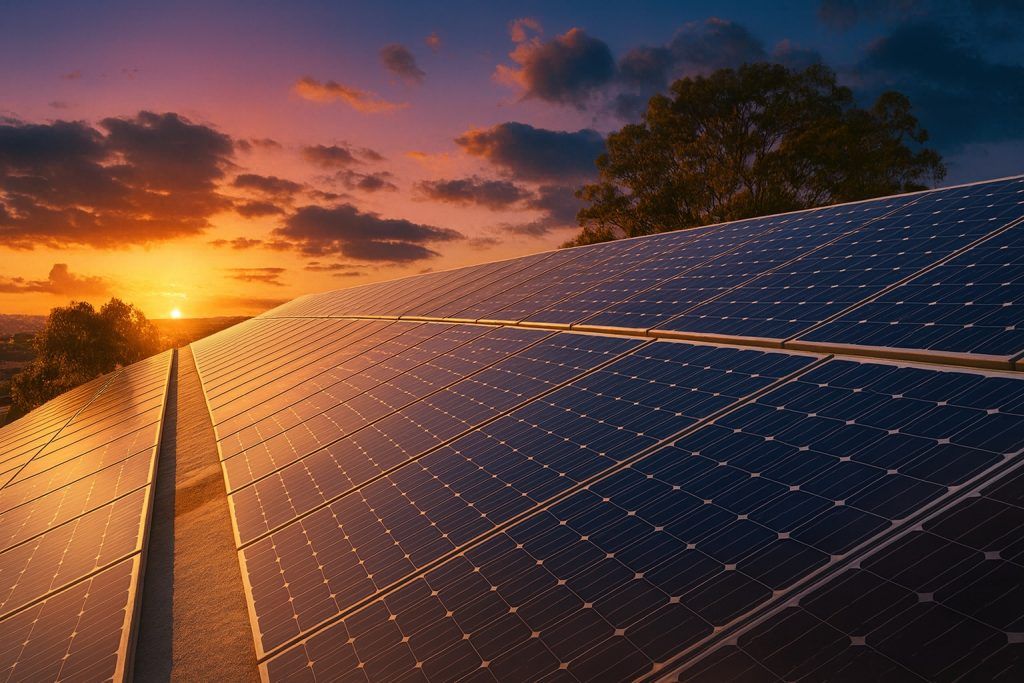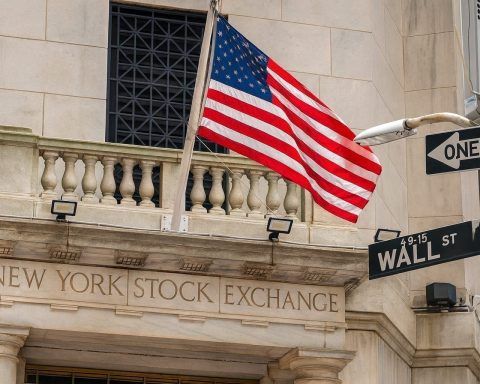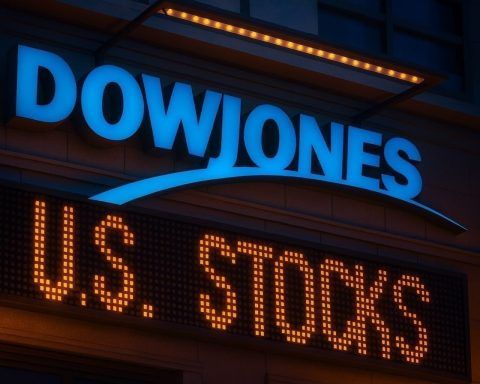- Silver near all-time highs: Spot silver surged to ~$49.5 per ounce on October 8, 2025 – its highest level since 1980/2011 – and was trading around $49 on Oct. 9 [1] [2]. This puts the metal within a hair’s breadth of its record peak (~$49.95).
- Huge 2025 gains: Silver has skyrocketed ~70% year-to-date, dramatically outperforming gold’s ~54% rise [3] [4]. In the past month alone, silver jumped ~20%, eclipsing gold’s ~11% gain [5]. The gold-to-silver price ratio tightened to ~82 (from ~100 earlier in the year), reflecting silver’s recent outperformance [6].
- Gold’s rally fueling silver: Gold broke above $4,000/oz for the first time in early October [7], spurring a spillover “safe-haven” frenzy into silver – often called the “poor man’s gold.” Investors chasing gold’s record run have increasingly turned to silver, helping drive its rapid ascent [8] [9].
- Safe-haven demand & Fed factor: A “perfect storm” of drivers is lifting precious metals. Escalating geopolitical and economic anxieties (conflicts, political turmoil) and expectations of imminent U.S. Federal Reserve rate cuts (which weaken the dollar) have sent investors flocking to safe havens like silver and gold [10] [11]. Non-yielding assets become more attractive as interest rates peak or fall, so the Fed’s dovish shift has turbocharged this rally [12].
- Industrial use + supply squeeze: Unlike gold, silver is also a critical industrial metal. Booming demand from solar panels, electronics, and green tech is underpinning prices [13]. At the same time, global silver supply is constrained – 2025 marks a fifth consecutive supply deficit (projected ~180+ million ounce shortfall) [14]. Mine output has barely grown (most silver is mined as a byproduct), so production can’t quickly ramp up despite higher prices [15]. This combo of robust usage and tight supply adds fundamental support to silver’s surge.
- Investors piling in:Investment inflows are red-hot. Silver-backed ETFs accumulated ~95 million ounces in the first half of 2025, a record haul that pushed total holdings above 1.13 billion oz (worth $40+ billion) [16]. Hedge funds and speculators have also jumped on the bandwagon – net long positions in silver futures have more than doubled since late 2024 [17]. “The silver market continues to tighten, with rising lease rates… amid India’s seasonal demand strength. The rally has been supported by hefty ETF inflows,” notes Suki Cooper, head of metals research at Standard Chartered [18].
- Breaking $50 – what’s next: Market watchers broadly expect silver to test the $50 level imminently [19]. HSBC analysts wrote that silver “stands on the cusp” of its 2011 record and is likely to surpass $50/oz in the near term [20]. The bank sharply raised its price forecasts, now envisioning a volatile $45–$53/oz range through year-end [21] [22]. Some bulls go further – arguing a decisive breakout above $50 could even ignite a “generational” price spike toward $75 or $100 if a physical squeeze intensifies [23].
- Volatility and risks:Caution is warranted – silver is notoriously volatile. The last two times prices neared $50 (in 1980 and 2011), spectacular booms were followed by brutal busts [24]. “Silver can be wildly volatile, prone to boom-and-bust cycles more than gold,” one veteran market watcher warns [25]. Hitting the $50 threshold is a key psychological test that could trigger profit-taking or turbulence again now [26]. Still, if silver punches through to new all-time highs, the lack of overhead resistance might “open the floodgates” to even sharper gains, analysts say [27].
Silver’s Historic Surge in 2025
Silver’s ascent in 2025 has been nothing short of stunning. The metal started the year in the low $30s but went on a blistering rally, now hovering just below the once-mythical $50/oz mark. On October 8, spot silver spiked to an intraday record ~$49.57 before settling around $49.4 [28]. By October 9, it traded near $49 – territory not seen in 14 years and only a sliver below silver’s nominal all-time peak (~$49.95 reached in 1980) [29]. This surge has propelled silver to roughly 70% gains in 2025, vastly outperforming most asset classes including its sister metal gold [30]. (For comparison, gold – which also notched record highs near $4,050/oz this week – is up about 53–54% year-to-date [31] [32].) Such outsized returns have rapidly narrowed the long-standing gold–silver ratio. That ratio – which hovered around 100:1 during parts of 2023 – has compressed to ~82:1 as silver played catch-up to gold’s move [33]. In other words, it now takes only 82 ounces of silver to equal the value of one ounce of gold, the tightest spread in about a year, reflecting silver’s strong outperformance of late.
This historic rally has also lifted related markets. Major silver mining stocks have been on fire: for example, Hecla Mining (HL), the largest U.S. silver producer, just jumped over 11% in one day to hit a record high ~$13.36/share on Oct. 8 as investors poured into miners [34] [35]. Clearly, the excitement around precious metals is spilling beyond just the commodities themselves and into equities tied to them.
Yet with silver now at the doorstep of $50, everyone from Wall Street to retail traders is asking: Will it finally break that legendary barrier? Twice in modern history – January 1980 and April 2011 – silver prices approached the $50 threshold only to violently collapse afterward [36] [37]. In 1980, an infamous attempt by the Hunt brothers to corner the silver market sparked a speculative frenzy that briefly sent prices to ~$49.80 before the bubble burst. In 2011, silver spiked to about $49.50 amid a post-financial-crisis commodities boom, then swiftly plunged in the aftermath [38]. These past episodes loom large in the minds of veteran investors. “Silver’s rallies can swiftly reverse,” warns one long-time market analyst, reminding that the metal’s volatility is extreme [39]. The $50 level is not just a round number – it’s a psychological inflection point where euphoria and fear intersect. Some traders may be tempted to take profits if silver hits $50 again, potentially triggering gyrations in the price.
On the other hand, if $50 is decisively broken, it would mark uncharted territory. With no historical overhead resistance above that level, bullish experts say a breakout could unleash even more explosive upside momentum [40]. Essentially, a new high could feed on itself as trend-following buyers jump in. “Once above $50, there’s no telling where an unfettered silver rally could go in the short run,” according to optimistic market watchers – with talk of $60, $75 or even $100/oz not entirely off the table among the most ardent silver bulls [41]. It’s this tantalizing mix of massive opportunity and risk that has the market’s full attention as silver flirts with its all-time high.
Safe-Haven Frenzy: Gold’s Coattails and Geopolitical Jitters
A key catalyst behind silver’s leap has been the broader rush to safe-haven assets in 2025. In times of turmoil, investors often flock to precious metals, and this year has provided plenty of fodder for anxiety: war and conflict, political instability, and economic uncertainty on multiple fronts. Gold’s meteoric rise has been the clearest signal of this flight to safety – the yellow metal blasted through its previous records, shattering the $4,000/oz milestone for the first time in early October [42]. By Oct. 8, gold was hovering around $4,050, up over 50% this year [43], making it one of 2025’s best-performing assets.
Silver, often viewed as gold’s more volatile cousin, has ridden firmly in gold’s slipstream. “Gains in gold attract ancillary buying in silver,” note analysts at HSBC, given the two metals’ historically close relationship [44]. Once gold started its record-breaking run, many investors who might find gold “expensive” or who wanted bigger upside turned to silver – the classic “poor man’s gold” effect [45]. Silver tends to exhibit higher beta (i.e. larger percentage swings) than gold. So when gold jumps, silver often soars by an even larger percentage, which is exactly what we’ve seen in recent weeks [46]. “Gold’s strength reflects an extremely positive macro backdrop for safe-haven assets…,” observes Matthew Piggott of Metals Focus, and that backdrop – which includes mounting geopolitical tensions – has boosted silver alongside gold [47].
Several geopolitical and economic flashpoints have stoked the safe-haven frenzy. In the Middle East and Eastern Europe, conflicts like the war in Ukraine (and, as of early October, a flare-up of violence in the Middle East) have rattled investors, prompting a defensive shift into precious metals [48] [49]. Political turmoil in various regions – for example, a brief government collapse in France and uncertainty in Japan – added to the global jitters [50]. Meanwhile, a partial U.S. government shutdown in early October and volatile bond markets (amid lingering inflation fears) further contributed to a general sense of uncertainty [51]. In such an environment, gold and silver’s appeal as crisis insurance grows.
Another major driver is the outlook for central bank policy. After aggressive interest rate hikes in 2022–2023, the U.S. Federal Reserve has shifted tone in 2025. With economic growth cooling and inflation still a concern but off its peaks, markets are now betting that the Fed will start cutting rates soon – possibly as early as the next FOMC meetings in late October and December 2025 [52] [53]. Traders have priced in at least a quarter-point (25 bps) rate cut by the Fed this month, with more to follow [54] [55]. These expectations have weakened the U.S. dollar and pulled down real yields, both of which make non-yielding assets like silver and gold more attractive [56] [57]. A softer dollar boosts silver’s appeal to foreign buyers (since silver is priced in USD) [58], and lower interest rates reduce the “opportunity cost” of holding metal instead of interest-bearing investments. In essence, the Fed’s pivot from tightening to easing has created a more favorable backdrop for precious metals. “With these factors persisting into 2026, we fail to see any catalyst for gold to meaningfully retrace at present,” notes Metals Focus’ Piggott, adding that as long as uncertainty and dovish monetary policy persist, safe-haven flows are likely to continue [59]. That sentiment bodes well for silver too.
Industrial Demand & Supply Squeeze: A “Perfect Storm” for Silver
Unlike gold, which is driven primarily by investment and jewelry demand, silver has a dual role: it’s not only a monetary safe-haven asset but also a critical industrial commodity. This has been a game-changer in 2025’s rally. On one hand, investors are bidding up silver as a store of value; on the other, manufacturers are snapping up silver for electronics, solar panels, electric vehicles, medical devices, and other applications at record levels. That convergence of investment and industrial demand is creating a “perfect storm” of upward pressure on prices [60].
Industrial usage of silver is booming. The global push for clean energy has made silver – a key component in photovoltaic (solar) cells – more indispensable than ever. Solar panel production in 2025 is consuming unprecedented amounts of silver, contributing to all-time high industrial offtake. Likewise, silver’s use in 5G infrastructure, semiconductors, batteries, and water purification remains robust. Even as prices climbed, sectors like electronics and renewable energy have continued to drive strong demand growth for the white metal. These fundamental factors mean that even without the investor frenzy, silver has solid real-economy demand supporting it. As one report noted, “key sectors such as the photovoltaic industry and electronics are expected to keep silver demand on an upward trajectory for years”. That structural demand sets silver apart from gold and provides a firmer floor under the price. (It’s worth noting that if silver prices spike too high, some price-sensitive uses – e.g. jewelry or certain industrial processes – could see a short-term dip, as HSBC analysts caution. However, any such pullback is expected to be limited; critical tech and green applications have few substitutes for silver’s unique properties.)
Meanwhile, on the supply side, silver is facing a significant crunch. 2025 is projected to be the fifth consecutive year that the world consumes more silver than is mined [61]. From 2019 through 2024, the cumulative supply shortfall was roughly 800 million ounces – a gap bridged by tapping above-ground inventories [62]. This year alone is on track for a deficit around 180–200 million ounces, roughly 20% of annual mine production [63]. Such persistent deficits are unusual in the modern silver market and signal that demand is outstripping what miners can deliver.
Why can’t supply keep up? One issue is that most silver is not mined directly. About 70–75% of silver output comes as a byproduct from mining other metals (like lead, zinc, copper, and gold) [64]. This means there are relatively few “pure” silver mines that can quickly ramp up output when silver prices rise. Base metal miners can’t easily increase their silver yield unless they boost production of those primary metals – which depends on entirely different market dynamics. Moreover, silver ore grades have been declining in many aging mines, and new large silver-rich deposits are scarce [65]. In short, mine supply is inelastic: even a big price jump doesn’t translate into a surge of new silver supply in the short term [66]. “Mine output can’t quickly ramp up even as prices rise,” analysts note, given these structural constraints [67]. Recycling of scrap silver does help at the margins (higher prices tend to bring more silver scrap to market), but it hasn’t been nearly enough to close the gap. Indeed, inventories in major silver vaults have been steadily drawn down – the London Bullion Market Association (LBMA) reports that silver stockpiles in its vaults have been trending lower, indicating physical supplies are being absorbed by the market [68]. If inventories drop to critically low levels, some analysts warn of “squeeze” scenarios where industrial users panic at securing material, potentially causing even sharper price spikes [69].
The combination of surging demand and constrained supply has made the silver market tighter than it’s been in years. Rising lease rates (the cost to borrow physical silver) and record-high COMEX futures deliveries signal this tightness [70]. “The silver market continues to tighten,” observes Standard Chartered’s Suki Cooper, pointing to rising lease rates, strong Indian demand, and hefty ETF inflows as evidence of strain [71]. In other words, the current rally is not purely speculative – it has a strong underpinning of real demand exceeding supply, which is a fundamentally bullish sign.
Investor Mania: ETFs, Speculators and the Hunt for $50
Beyond industrial users, financial investors have been a huge force in silver’s 2025 surge. Flush with liquidity and wary of other markets, investors ranging from hedge funds to small retail buyers have piled into silver in various forms. One major avenue has been exchange-traded funds (ETFs) backed by physical silver. In the first half of 2025, silver ETFs added roughly 95 million ounces to their holdings – a record influx [72]. Total known ETF holdings of silver now exceed 1.13 billion ounces (worth over $40 billion at current prices) [73]. To put that in perspective, these funds collectively hold about one year’s worth of global silver demand in their vaults [74]. This effectively siphons a huge amount of physical silver off the market, contributing to the supply squeeze. ETFs have made it easier than ever for both institutions and retail investors to gain exposure to silver, and in 2025 they have done so with zeal.
Futures markets tell a similar story. Speculative positioning in COMEX silver futures has turned decidedly bullish. Money managers (like hedge funds) have more than doubled their net-long positions compared to late 2024 [75]. In plain English, a lot of trading firms are betting on higher silver prices, further propelling the uptrend. This kind of momentum trading can itself push prices higher, creating a virtuous cycle for bulls (albeit one that can reverse quickly if sentiment turns). “Investors are piling in,” notes one commodities report, citing record ETF inflows and bullish futures bets as hallmarks of the current rally [76]. Indeed, some of 2025’s silver buying spree has echoes of early 2021’s “Reddit silver squeeze” attempt – when online communities briefly pushed silver higher – except this time the move appears more fundamentally driven and institutionally backed [77].
The fervor has even sparked chatter about an eventual “silver squeeze” – a scenario where a scramble for available physical silver drives prices into a steep spike. While the market isn’t there yet, the ingredients are in place: tightening inventories, robust demand, and enthusiastic investors. If, for example, a large industrial buyer suddenly found it hard to source silver, or if ETF inflows continued at record pace, it could trigger panicked buying that sends prices vertical [78] [79]. Such events are rare, but not without precedent in commodity markets. For now, though, most analysts see the current surge as grounded in fundamentals rather than a short-term squeeze play.
It’s also worth noting that central banks – huge buyers of gold in recent years – are not big direct purchasers of silver. Silver’s investor base is thus more heavily skewed to private investors and industry. That means silver can be more prone to speculative swings. The flipside is that if those investors maintain conviction, they can also sustain a high price. So far in 2025, there’s little sign of capitulation – dips in silver have been shallow and met with eager buying. As long as the narrative of inflation hedging, currency hedging, and geopolitical hedging stays intact, investor appetite for silver is likely to remain strong.
Outlook: Forecasts and the Road Ahead
With silver trading just shy of $50, what do experts think comes next? The general consensus is that a test of the all-time high is imminent, barring any sudden shift in market conditions [80]. Many analysts expect silver will breach $50/oz in the near term – a view bolstered by the momentum in both technical and fundamental factors. HSBC’s metals strategy team is among those bullish voices. In a note on Oct. 7, HSBC wrote that the silver market “stands on the cusp” of the 2011 record and is likely to surpass it soon [81]. Reflecting this optimism, HSBC dramatically upgraded its price forecasts: the bank now sees silver averaging around $45–$53/oz for the remainder of 2025 (a much higher range than its earlier mid-$30s prediction) [82] [83]. For 2026, HSBC likewise raised its outlook – expecting prices to remain in the $40s on average, with the highest levels in early 2026 before some cooling in the second half as supply responds and gold’s rally moderates [84]. In numerical terms, HSBC lifted its 2025 average silver price forecast to $38.56 (from ~$35 before) and 2026 to $44.50 (from ~$34), emphasizing that volatility will likely persist [85] [86].
Other forecasters echo the view that silver could forge sustainably into new highs, albeit with plenty of swings along the way. UBS analysts, for instance, have pointed to gold’s strength and silver’s supply deficits as justification for higher price targets, noting silver’s tendency to overshoot when it gets going (due to its smaller market size and lower liquidity compared to gold) [87] [88]. Many mainstream banks and research firms now have year-end targets in the high-$40s to low-$50s – essentially around current levels or a bit higher [89]. That means much of Wall Street has been playing catch-up, revising forecasts upward as silver relentlessly climbed. A month ago, $50 seemed a distant milestone; now it’s almost reality.
The real debate is what happens after $50. Will silver stabilize around the low $50s, or accelerate even higher? The answer may depend on a few key factors in the coming weeks and months:
- Federal Reserve moves: If the Fed indeed cuts rates and signals a pause on inflation worries, that could continue to support silver. However, if inflation comes roaring back or the Fed hesitates on easing (keeping real rates higher), that could cap precious metals. As of now, markets lean toward the dovish scenario – good for silver – but central bank pivots can surprise.
- Geopolitical developments: Any resolution or cooling of major conflicts might dampen the extreme safe-haven demand. Conversely, escalation of crises (or new ones emerging) could further boost gold and silver as protection assets. The trajectory of the war in Ukraine, Middle East tensions, and political stability in key economies will be watched closely by metal traders.
- Physical market stress: Watch those inventory levels and industrial user behavior. If silver inventories (in London, New York, or Shanghai) fall to critically low levels, it could signal a physical crunch that pushes prices above what pure financial demand might dictate. Also, if we see end-users scrambling or complaining about shortages, that’s a sign the rally has legs (albeit with potential blowback if factories temporarily scale back usage due to cost). Thus far, the deficit has been met quietly by stocks on hand – but those buffers are finite [90] [91].
- Investor sentiment: At nearly $50, silver will undoubtedly grab headlines, possibly drawing in a late wave of retail buyers. How long those newcomers stick around – and whether large investors start taking profits – will influence if the rally can sustain. If speculative froth becomes too extreme, a pullback could ensue. However, if new money keeps rotating in (for instance, from investors reallocating out of equities or crypto into metals), silver could find a higher plateau.
In the near term, volatility is almost guaranteed. Big round numbers like $50 tend to be magnets for both breakout traders and profit-takers. As one trader quipped, “volatility is the price of admission in the silver market.” Already in 2025, silver has seen multiple swift corrections amid its climb, only to resume the uptrend. Veteran analysts urge caution as $50 is approached, given silver’s history of head-fakes and rapid reversals [92]. But importantly, the context today is different from 1980 or 2011. The current rally has a broader base of support – from macro policy to physical demand – whereas previous spikes were more narrowly speculative. “This time, the drivers are more diversified – it’s not just one fund cornering the market or one post-recession boom,” notes a market strategist, “so there is a case that any correction might be shallower than in the past.”
Bottom line: Silver is shining brighter than it has in decades, thanks to a confluence of supportive factors. The elusive $50/oz mark is within reach, and breaking it could mark a new chapter in the market. Yet history reminds us that gravity can reassert itself quickly in this high-flying metal. Investors and analysts are bracing for turbulence ahead – but many remain optimistic that 2025’s silver story isn’t done yet. As HSBC’s team put it, “the stars have aligned for silver,” and if those stars hold their position, we may soon see this long-undervalued metal writing a fresh record in the books [93]. The coming days will test whether silver can finally grab that brass ring of $50 – and if so, what lies beyond on the other side of this historic breakout.
Sources: Reuters, TS2 Tech (Tech Space 2.0), Fortune, Financial Express, InsiderMonkey, Metals Focus, Standard Chartered Bank, Silver Institute, HSBC forecasts [94] [95] [96] [97].
References
1. www.reuters.com, 2. www.financialexpress.com, 3. www.reuters.com, 4. www.financialexpress.com, 5. www.financialexpress.com, 6. www.financialexpress.com, 7. www.reuters.com, 8. ts2.tech, 9. www.reuters.com, 10. ts2.tech, 11. ts2.tech, 12. ts2.tech, 13. ts2.tech, 14. ts2.tech, 15. ts2.tech, 16. ts2.tech, 17. ts2.tech, 18. www.reuters.com, 19. ts2.tech, 20. ts2.tech, 21. ts2.tech, 22. www.reuters.com, 23. ts2.tech, 24. ts2.tech, 25. ts2.tech, 26. ts2.tech, 27. ts2.tech, 28. www.reuters.com, 29. www.financialexpress.com, 30. www.reuters.com, 31. www.reuters.com, 32. www.financialexpress.com, 33. www.financialexpress.com, 34. www.insidermonkey.com, 35. www.insidermonkey.com, 36. ts2.tech, 37. ts2.tech, 38. ts2.tech, 39. ts2.tech, 40. ts2.tech, 41. ts2.tech, 42. www.reuters.com, 43. www.reuters.com, 44. ts2.tech, 45. ts2.tech, 46. ts2.tech, 47. www.reuters.com, 48. ts2.tech, 49. ts2.tech, 50. ts2.tech, 51. ts2.tech, 52. www.insidermonkey.com, 53. www.insidermonkey.com, 54. www.insidermonkey.com, 55. www.insidermonkey.com, 56. ts2.tech, 57. ts2.tech, 58. ts2.tech, 59. www.reuters.com, 60. ts2.tech, 61. ts2.tech, 62. ts2.tech, 63. ts2.tech, 64. ts2.tech, 65. ts2.tech, 66. ts2.tech, 67. ts2.tech, 68. ts2.tech, 69. ts2.tech, 70. www.insidermonkey.com, 71. www.reuters.com, 72. ts2.tech, 73. ts2.tech, 74. ts2.tech, 75. ts2.tech, 76. ts2.tech, 77. ts2.tech, 78. ts2.tech, 79. ts2.tech, 80. ts2.tech, 81. ts2.tech, 82. ts2.tech, 83. www.reuters.com, 84. www.reuters.com, 85. www.reuters.com, 86. www.reuters.com, 87. ts2.tech, 88. ts2.tech, 89. ts2.tech, 90. ts2.tech, 91. ts2.tech, 92. ts2.tech, 93. ts2.tech, 94. www.reuters.com, 95. ts2.tech, 96. ts2.tech, 97. www.reuters.com










